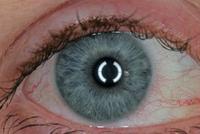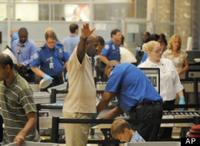-
NIST releases second draft of PIV cards security standard for comment
The National Institute of Standards and Technology (NIST) has released the second-round draft version of its updated security standard for identity credentials in the Personal Identity Verification cards (PIV cards) that all federal employees and contractors must use; NIST is requesting comments from the public on the document, which is intended to be the last draft before the final version is published
-
-
Voice recognition capabilities at the FBI -- from the 1960s to the present
Chris Archer, the online content editor at IDGA (the Institute for Defense & Government Advancement), talked with Hirotaka Nakasone, a senior scientist in the FBI’s Voice Recognition Program; Nakasone examines the use and effectiveness of current speaker authentication technologies at the FBI; highlights the various challenges which are unique to voice recognition, and discusses what plans are in place for capturing voice recordings in line with the FBI’s Next Generation Identification (NGI project)
-
-
Not taking faces at face value
Photographs of faces may not be adequate proof of a person’s identity and this could have serious implications for the accuracy of passport photographs in determining identity
-
-
Biometrics proves 1 percent of applicants to enter U.S. are unsuitable
Chris Archer, the online content editor at IDGA (the Institute for Defense & Government Advancement), talked with James Loudermilk, Senior Level Technologist, FBI Science and Technology Branch, about biometrics and biometrics and homeland security; Loudermilk says that biometrics applications helped the FBI determine that about 1 percent of people who seek visa to visit the United States as tourists have previously done things that make them unsuitable guests; the conversation examines the application of biometrics for homeland security, issues relating to privacy and civil liberties, and what can be learned from international biometrics projects, including India’s UID scheme
-
-
Forensic research using DNA sequencing technology
The Ion Personal Genome Machine (PGM) Sequencer translates chemical sequencing information directly into digital form by using semiconductor technology; it enables the analysis of ninety-six samples in one run, allowing forensic practitioners to obtain more information from the samples they process; the sequencer is suitable for a wide array of forensic identification applications, including missing persons identifications, mass disaster work, interpretations of complex mixtures, and bio-defense
-
-
Researchers advance biometric security
Researchers have developed a way for security systems to combine different biometric measurements — such as eye color, face shape, or fingerprints — and create a learning system that simulates the brain in making decisions about information from different sources
-
-
The complexities of the human face: analyzing facial recognition technologies in unconstrained environments
Chris Archer, the online content editor at IDGA (the Institute for Defense & Government Advancement), talked with Thirimachos Bourlai, research assistant professor at West Virginia University, about facial recognition technologies; the human face has several advantages over other biometric traits: it is non-intrusive, understandable, and can be captured in a covert manner at variable standoff distances; Bourlai examines the various challenges of facial recognition as a biometric technology faces; defines “unconstrained recognition” and how this challenge is being met; he also explores how facial recognition will be used by the military and commercially in the short and long term future
-
-
Aging process confounds iris recognition biometrics

It is commonly assumed that biometric template aging does not occur for iris biometrics; there may well be a need to examine this assumption; two University of Notre Dame scientists found that the rate at which a state-of-the-art, commercial iris-matching software system failed to match two images of the same iris — known as the false non-match rate — increased by 153 percent over three years
-
-
Advanced investigative facial recognition solution for law enforcement
Animetrics shows ForensicaGPS, a new facial biometric tool for local, state, and federal law enforcement; the company says ForensicaGPS allows law enforcement to identify criminal suspects, even from a low-resolution photo or video surveillance
-
-
Biometric data collection in U.S. immigrant communities and beyond
DHS takes approximately 300,000 fingerprints per day from non-U.S. citizens crossing the border into the United States, and it collects biometrics from noncitizens applying for immigration benefits and from immigrants who have been detained; in addition, state and local law enforcement officers regularly collect fingerprints and DNA, as well as face prints and even iris scans
-
-
Biometrics market set to grow by 21 percent CAGR from 2012 to 2014
The biometric security market set to grow at a CAGR of around 21 percent during 2012-2014; governments’ growing reliance on biometrics for national security, and efforts by corporations to thwart identity theft, are main growth drivers
-
-
Aware provides biometrics products for border management systems
Aware’s software products will be used for biometric enrolment, watch-list checks, verification, and workflow in Europe, the Middle East, and North America
-
-
Reason-based behavioral recognition system wins award
A reason-based behavioral recognition system for video surveillance developed by Houston, Texas-based BRS Labs wins an award at London’s Counter Terror Expo
-
-
Maryland police defy court decision, continue to collect arrestees DNA
Police departments around Maryland will continue to collect arrestees DNA despite the state top court’s ruling by a five-to-two decision that such collection is a violation of Fourth Amendment rights to privacy
-
-
Airport racial profiling app unveiled

The New York-based Sikh Coalition, together with other civil rights organizations, is today unveiling a mobile application which allows users to report instances of racial profiling at airports in real time; users are prompted with some questions geared specifically toward Sikhs, but that the app also allows for accounts of discrimination from members of all communities who feel their rights have been violated
-
- All
- Regional
- Water
- Biometrics
- Borders/Immig
- Business
- Cybersecurity
- Detection
- Disasters
- Government
- Infrastructure
- International
- Public health
- Public Safety
- Communication interoperabillity
- Emergency services
- Emergency medical services
- Fire
- First response
- IEDs
- Law Enforcement
- Law Enforcement Technology
- Military technology
- Nonlethal weapons
- Nuclear weapons
- Personal protection equipment
- Police
- Notification /alert systems
- Situational awareness
- Weapons systems
- Sci-Tech
- Sector Reports
- Surveillance
- Transportation
Advertising & Marketing: advertise@newswirepubs.com
Editorial: editor@newswirepubs.com
General: info@newswirepubs.com
2010-2011 © News Wire Publications, LLC News Wire Publications, LLC
220 Old Country Road | Suite 200 | Mineola | New York | 11501
Permissions and Policies
Editorial: editor@newswirepubs.com
General: info@newswirepubs.com
2010-2011 © News Wire Publications, LLC News Wire Publications, LLC
220 Old Country Road | Suite 200 | Mineola | New York | 11501
Permissions and Policies
